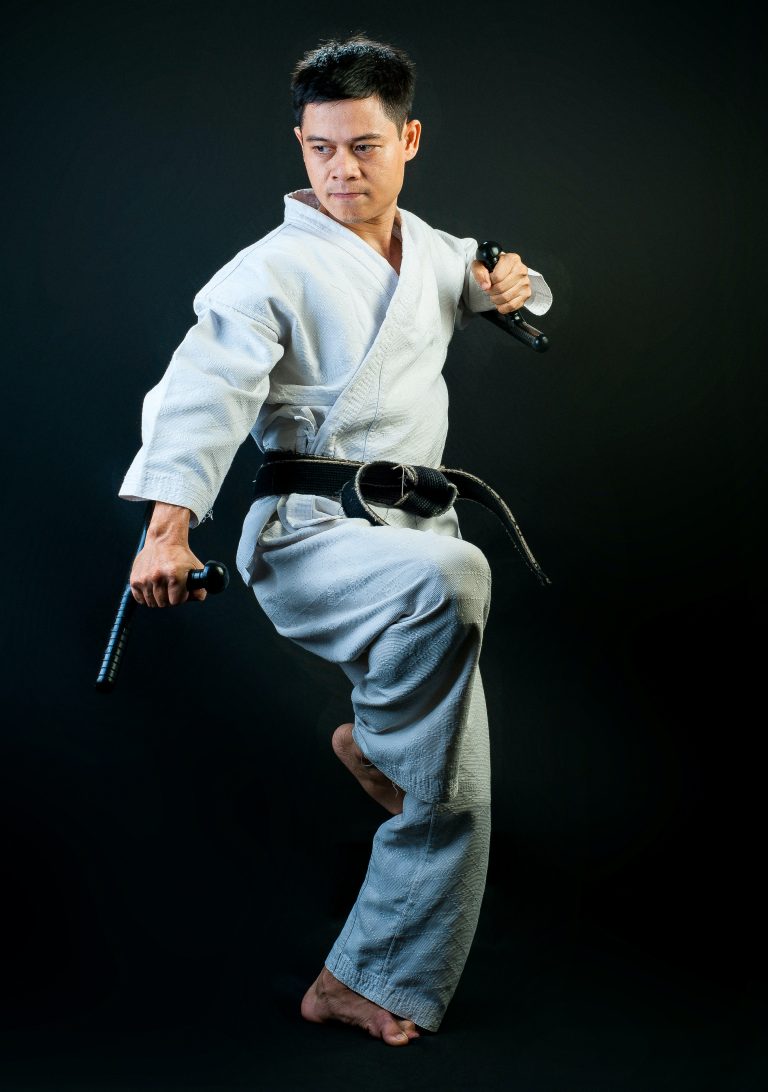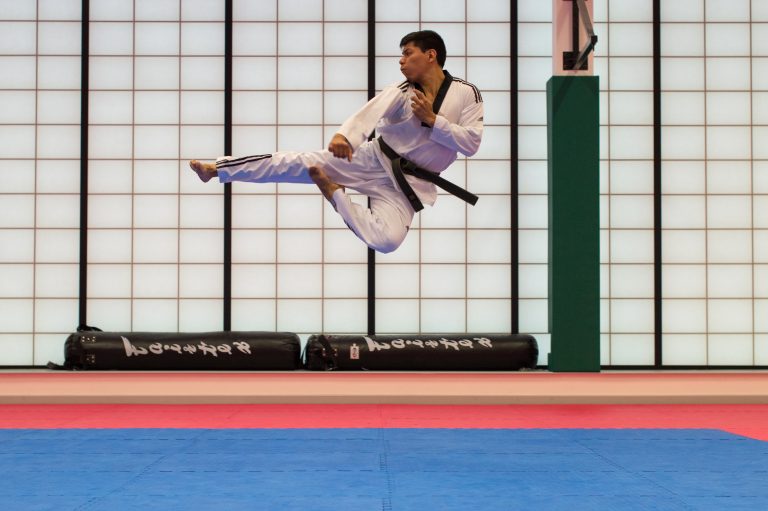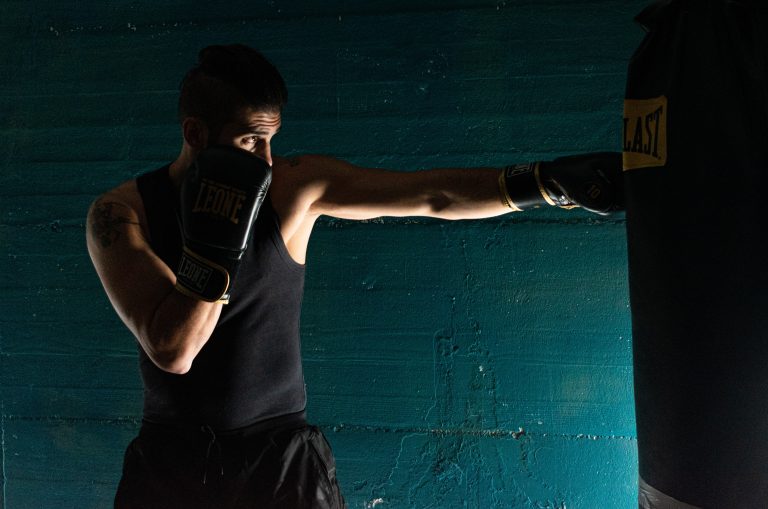What are Karate Belts Made of?
Karate is a form of martial arts that involves discipline, strength, and agility. As in many martial arts, karate has a ranking system based on the skill level of the practitioner. These ranks are symbolized by different colored belts. But what are karate belts made of? Let’s dive deeper into the history and materials used in karate belts.
History of Karate Belts
The origin of the colored belt system in karate goes back to the 19th century when Jigoro Kano, the founder of Judo, created a ranking system based on different colored belts. Later, this system was adopted by many other martial arts, including karate.
The earliest form of karate belts was simply a white belt that was often not even worn. Gradually, colored belts were introduced to symbolize the progress of the student. The belt ranking system in karate starts with white and ends with black, with varying colors in between.
Materials Used in Karate Belts
Karate belts are made of different materials, depending on the preference of the student or the instructor. The most common materials used for karate belts are cotton, polyester, and silk.
Cotton is a very common material for karate belts. It is lightweight, durable, and affordable. It is also easy to wash, which is crucial in a sport where the belts are often worn during rigorous training sessions.
Polyester is another material used for karate belts. It is also lightweight and durable, and it has the added advantage of being resistant to wrinkles and creases. Polyester belts are often made with a shinier material, which gives them a unique look.
Silk is the most luxurious material used for karate belts. It is soft and smooth, and it has a unique lustrous shine. It is also more expensive than cotton and polyester, which makes it less common.
The Color System of Karate Belts
As mentioned earlier, the color of a karate belt is an indication of the skill level of the practitioner. The most common color system for karate belts is:
– White belt – symbolizing purity and innocence, a beginner without any knowledge of karate.
– Yellow belt – symbolizing the first rays of sun and the growth of the seed, grasping the basics of karate.
– Orange belt – symbolizing the full of energy and enthusiasm, a period of growth and development in karate.
– Green belt – symbolizing growth, maturity and stability, advanced level of knowledge in karate.
– Blue belt – symbolizing the sky and the infinite possibilities that await, advanced level of understanding and knowledge in karate.
– Purple belt – symbolizing royalty and nobility, a time of transition in karate.
– Brown belt – symbolizing the strength and endurance of the earth, mastery of the basics of karate.
– Black belt – symbolizing the darkness and mystery, mastery of karate, a beginning not an end.
Caring for Your Karate Belt
Karate belts are an important part of a practitioner’s uniform, and proper care should be taken to maintain their appearance and quality. Here are some tips for caring for your karate belt:
– Wash your belt regularly – Sweat and dirt can accumulate on your belt, so it is important to wash it regularly. Wash your belt by hand in cold water and hang it to dry.
– Don’t iron your belt – Ironing your karate belt can cause damage to the material and affect its quality.
– Don’t tie your belt too tightly – Tying your karate belt too tightly can cause creases and wrinkles. It is important to tie your belt with a comfortable fit that allows you to move and breathe easily.
What Are Karate Belts Made Of?
Introduction
Karate belts are an essential component of the martial art discipline. They symbolize the progress of the learner from beginner to advanced level. Many beginners who are new to karate often wonder what their belts are made of. In this blog post, we will answer the most frequently asked questions about what karate belts are made of.
What Materials Are Karate Belts Made Of?
Karate belts are made of a variety of materials, including cotton, polyester, silk, and wool. Cotton is the most common material used for karate belts because it is comfortable, breathable, and inexpensive. Polyester is also a popular choice because it is durable and resists shrinking and wrinkles. Silk belts are available in some schools, but they are not as common due to their cost. Wool belts are also an option but are less popular because they can be itchy and uncomfortable to wear.
What Type of Weave is Used for Karate Belts?
The weave of a karate belt refers to the way the cotton fibers are sewn together. The most common weave used for karate belts is a plain weave, which means that the warp and weft threads are interlaced evenly. Other types of weaves include twill weave and herringbone weave, but they are less common.
How Are Karate Belts Colored?
Karate belts are traditionally colored using a system developed by Jigoro Kano, the founder of judo. The system uses different colored belts to indicate the level of experience and knowledge of the practitioner. The colors used in karate belts are white, yellow, orange, green, blue, purple, brown, and black. Each level is indicated by a different colored belt, with black representing the highest level of achievement.
What Are Karate Belts Made Of?
Karate belts, also known as obi, are part and parcel of the karate uniform and symbolize the progression and mastery of skills of the wearer. Wearing a karate belt reflects the student’s level of proficiency, dedication, and hard work in the martial art. Most people may not know that the karate belt is not just a piece of colorful fabric; they are made out of various materials based on quality, durability, and aesthetics. This guide will provide a detailed insight into the different materials used in making karate belts.
What are the Materials Used in Making Karate Belts?
Karate belts may be made of different materials ranging from cotton, polyester, silk, to satin. The most common material used in making karate belts is cotton, which is known for its durability and easy-to-dye properties. The cotton material used in making belts is not just any regular cotton cloth but a specifically woven kind of cotton known as cotton webbing. The webbing makes the belt sturdy and resistant to wear and tear.
Cotton Karate Belts
Cotton Karate belts are the most common type of karate belts. They are strong, durable, and can withstand frequent use and washing. These belts are easy to dye, making it easier to identify the different ranks and designations of the wearer. Cotton karate belts come in different grades of quality and thickness, with the highest quality belt having ten times the amount of stitching as the lower quality ones.
Polyester Karate Belts
Polyester karate belts are made from synthetic materials and are not as durable as cotton belts. They are lightweight, easy-care, and can resist wrinkles and stains. However, they may not be as robust as cotton belts and may need frequent replacement. Polyester belts are less popular than cotton belts for practical reasons.
Silk Karate Belts
Silk Karate belts are the most delicate and colorful type of karate belts. They are expensive to produce, and their cost reflects their premium quality. Silk belts are preferred by many martial artists because of their sheen and luxurious feel. The belt is soft, lightweight, and comfortable, making it ideal for competition and special occasions. However, they are not as robust or durable as cotton belts.
Satin Karate Belts
Satin karate belts are sleek and shiny, providing a visually appealing look. They are lightweight and comfortable to wear but are not as durable as cotton belts. Satin belts are often used for presentation purposes in a ceremony or competition, as they are less suitable for everyday training.
Factors to Consider When Choosing Karate Belts
When choosing karate belts, there are some factors you should consider:
Durability
The durability of the belt you choose is important. You want a belt that is strong and can withstand frequent use and washing. Cotton belts are the most durable, followed by polyester and silk belts.
Cost
Karate belts come at different prices depending on the materials used in making them. Cotton belts are the most affordable, while silk belts are among the most expensive.
Appearance
The appearance of the belt is essential. You want a belt that looks good on you and matches your uniform. Cotton, silk, and satin belts all provide their distinct look and feel.
Conclusion
Karate belts may seem just like any other piece of fabric, but their importance in the martial art cannot be underestimated. They symbolize dedication, hard work, and proficiency in the art. When choosing karate belts, it is essential to consider the material, durability, cost, and appearance. Whatever belt you choose, remember that it represents your level of skill and progress in the art, wear it with pride.
Inhaltsverzeichnis






